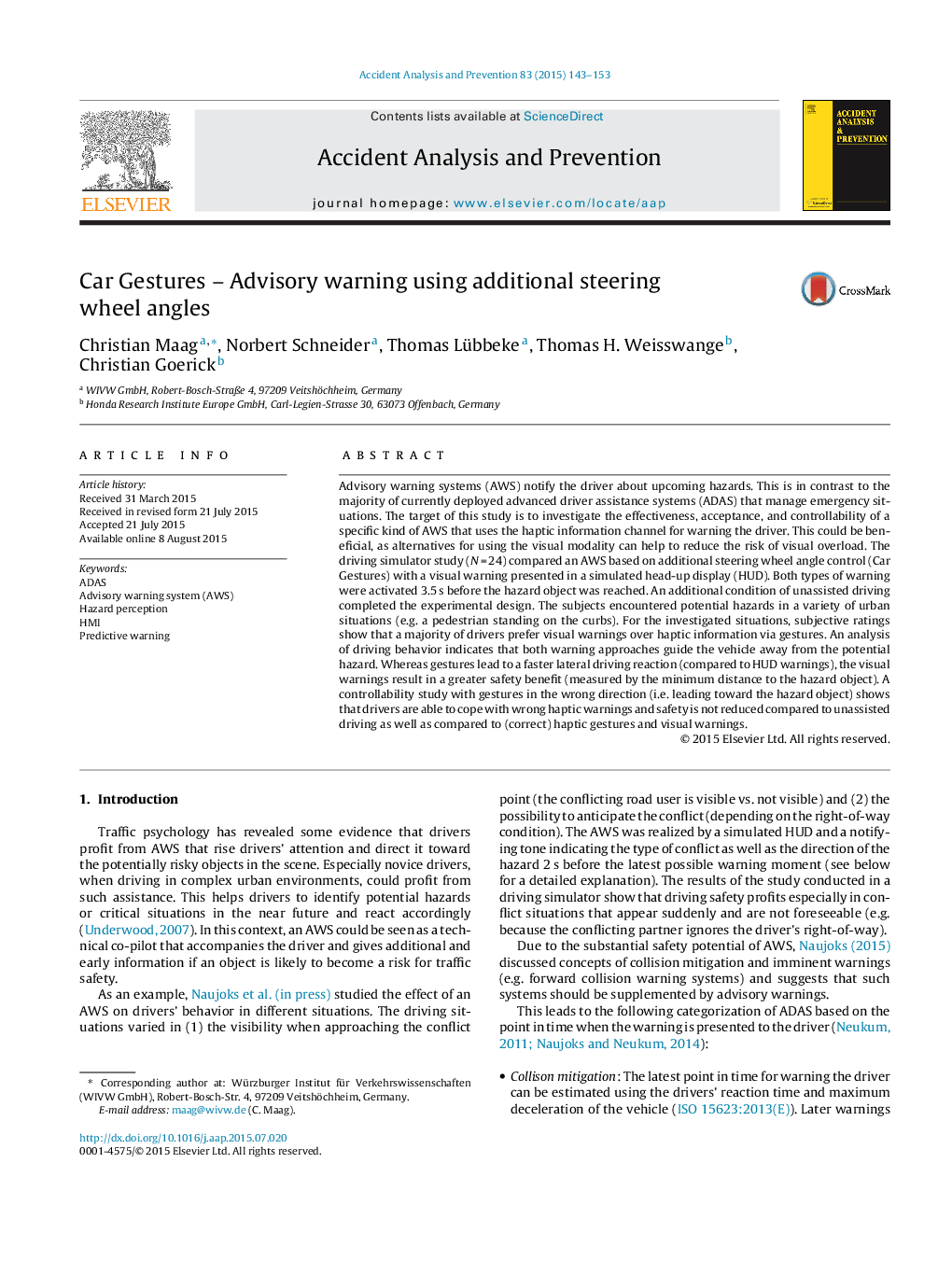| کد مقاله | کد نشریه | سال انتشار | مقاله انگلیسی | نسخه تمام متن |
|---|---|---|---|---|
| 572107 | 1452914 | 2015 | 11 صفحه PDF | دانلود رایگان |
• Drivers prefer visual advisory warnings over haptic warnings in the steering wheel.
• Both warning approaches guide the vehicle away from the potential hazard.
• Haptic warnings lead to a faster lateral driving reaction compared to HUD warnings.
• Visual warnings result in a greater safety benefit.
• Drivers are able to cope with haptic warnings that guide into the wrong direction.
Advisory warning systems (AWS) notify the driver about upcoming hazards. This is in contrast to the majority of currently deployed advanced driver assistance systems (ADAS) that manage emergency situations. The target of this study is to investigate the effectiveness, acceptance, and controllability of a specific kind of AWS that uses the haptic information channel for warning the driver. This could be beneficial, as alternatives for using the visual modality can help to reduce the risk of visual overload. The driving simulator study (N = 24) compared an AWS based on additional steering wheel angle control (Car Gestures) with a visual warning presented in a simulated head-up display (HUD). Both types of warning were activated 3.5 s before the hazard object was reached. An additional condition of unassisted driving completed the experimental design. The subjects encountered potential hazards in a variety of urban situations (e.g. a pedestrian standing on the curbs). For the investigated situations, subjective ratings show that a majority of drivers prefer visual warnings over haptic information via gestures. An analysis of driving behavior indicates that both warning approaches guide the vehicle away from the potential hazard. Whereas gestures lead to a faster lateral driving reaction (compared to HUD warnings), the visual warnings result in a greater safety benefit (measured by the minimum distance to the hazard object). A controllability study with gestures in the wrong direction (i.e. leading toward the hazard object) shows that drivers are able to cope with wrong haptic warnings and safety is not reduced compared to unassisted driving as well as compared to (correct) haptic gestures and visual warnings.
Journal: Accident Analysis & Prevention - Volume 83, October 2015, Pages 143–153
